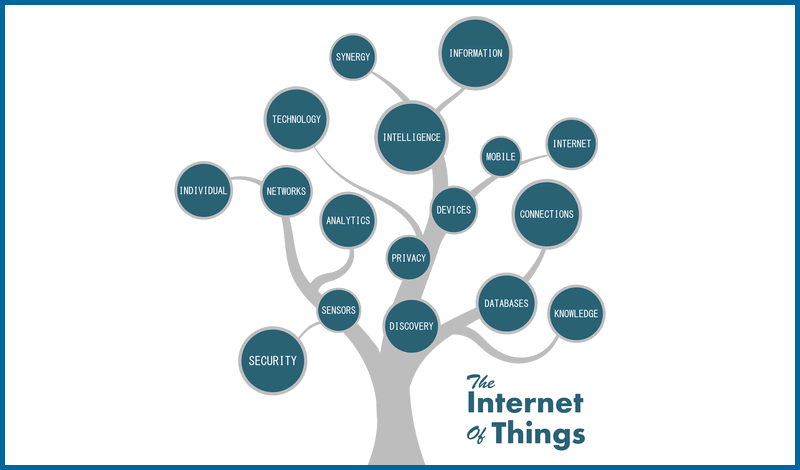 Over the last few years, the tech buzzphrase “Internet of Things” (IoT) has proliferated across the Web and other communication channels. Yet many working professionals do not grasp the basic elements of the IoT, and how it will impact their jobs. What is more, a lot of HR managers fail to recognize the effect that the IoT will have on their workplaces, colleagues and operations. Both smaller firms and large enterprises will be touched by the IoT on varying levels. It is incumbent upon HR pros to learn more about how the IoT will increasingly affect their daily work lives.
Over the last few years, the tech buzzphrase “Internet of Things” (IoT) has proliferated across the Web and other communication channels. Yet many working professionals do not grasp the basic elements of the IoT, and how it will impact their jobs. What is more, a lot of HR managers fail to recognize the effect that the IoT will have on their workplaces, colleagues and operations. Both smaller firms and large enterprises will be touched by the IoT on varying levels. It is incumbent upon HR pros to learn more about how the IoT will increasingly affect their daily work lives.
But first, it is useful for HR pros to understand what the IoT is and its potential reach. The phrase IoT is commonly credited as having been first coined by British technologist Kevin Ashton in 1999. As Ashton later explained in a contributed piece for RFID Journal, he created the phrase while working at Procter & Gamble. He used it as the title for a presentation that he gave on radio-frequency identification (RFID) sensors.
The concept got further refined in a 2013 McKinsey Global Institute (MGI) report. It described that the IoT “refers to the use of sensors, actuators, and data communications technology built into physical objects —from roadways to pacemakers—that enable those objects to be tracked, coordinated, or controlled across a data network or the Internet.” The report also explained the three stages of IoT applications as “capturing data from the object (for example, simple location data or more complex information), aggregating that information across a data network, and acting on that information.”
Looking ahead, there is a very wide range of new application areas that will open up to the IoT. The rapidly growing number of smart embedded devices, which can be integrated and networked, has unlocked opportunities for use of the IoT in almost every field. For instance, it has numerous applications in agriculture, energy management, environmental monitoring, finance, healthcare, retail, transportation, telecom and IT.
What is more, the rising applications in these markets are continuing to generate a growing demand for the IoT. Granted, a myriad of middleware issues still need to be resolved in order for the IoT to reach its full potential and augment the everyday lives of people. This is especially true for consumer-based IoT. But, companies involved in IT, data analytics, telecom and mobile device manufacturing have already begun to embrace the IoT.
In 2013, the Economist magazine surveyed 779 senior business leaders from around the world about their thoughts on the IoT. 96 percent of the surveyed senior executives said that they expected “their business to be using the IoT in some respect” by 2016. And, 61 percent of the respondents felt “that companies that are slow to integrate the IoT into their business will fall behind the competition.” The survey also showed that 29 percent of senior executives’ companies had experienced over a 10 percent year-on-year increase in IoT investment.
All the while, the projected reach and scope of the IoT continues to astound business leaders and consumers alike. Recent research published by CompTIA projects that there will be “50.1 billion things connected to the Internet” by 2020. Likewise, this past August ABI Research forecasted that the number of wireless connected devices will reach 40.9 billion by 2020 due mainly to the IoT. Moreover, MGI’s aforementioned report estimated that the IoT has the broad potential to connect 1 trillion things “across industries such as manufacturing, health care, and mining.”
So as we begin to enter the age of the IoT, HR managers need to think about how this disruptive technology will modify their organizations’ operations. Indeed 29 percent of the respondents in the previously cited Economist survey said that the IoT “will inspire new working practices or businesses processes.” Given this, HR pros should start thinking about the IoT’s potential influence on the following three issues:
Demand for Technical Acumen and Operational Expertise
Traditional companies are now faced with the challenge of needing to redesign their business models within the context of the IoT ecosystem. On the other hand, smaller startups have the flexibility to begin their ventures based on an IoT business model. Nevertheless, most organizations lack the engineering talent needed to manage and synthesize the confluence of enabling technologies that facilitate a business’s IoT activities.
More and more, employers covet workers with the requisite skills and competencies needed to harness the power of the IoT. Organizations want employees who possess technological proficiency, and an ability to adapt quickly to the emerging challenges that the IoT will present.
HR managers need to recruit and develop workers who demonstrate an ingenious aptitude for maximizing the capabilities of the core technologies that make up the IoT. Indeed.com has reported on the dramatic job growth for positions that involve HTML5, iOS and Android. And, mobile app jobs have also spiked over the last several years according to Indeed.com. This is all due in large part to the fact that employers are ramping up their efforts to integrate the IoT into their organizations.
The rapid job growth in these fields requires HR executives to do their due diligence when recruiting talent for these roles. It is important to hire a tech team that not only has a vast understanding of the IoT’s core technologies, but can coordinate the deployment and ongoing management of its components. HR departments should strongly consider partnering with a background screening company that offers comprehensive verification services to ensure that they are hiring technologists with the right work experience and expertise.

Creation of New Jobs, Elimination of Obsolete Roles
Similar to other disruptive technologies of the past, the IoT promises to spawn whole new categories of jobs. It offers game-changing potential that could both enhance current jobs and create many new opportunities in various verticals.
In fact, the World Economic Forum (WEF) recently published a post that predicted “the IoT economy will lead to the emergence of new hybrid verticals.” The WEF’s Manager of IT and Telecommunications Industries Elena Kvochko co-authored this post with Accenture’s Managing Director of Global R&D Prithviraj Banerjee. They proposed that within these new hybrid verticals, “it is likely that the typical employee will see their roles augmented by new technologies, and become better skilled and better paid as a result. The blue collar worker of the past could move up to be a white collar worker.”
However, even in its infancy, the IoT is forcing many companies to choose automation technology over large segments of their workforce. In 2010, the Economist prognosticated that the IoT’s “automation of the service sector…will have a devastating impact on the employment prospects of less-educated workers.” For some companies, that prediction has proven to be valid.
As a consequence, this has fueled a sense of apprehension about the adoption and deployment of IoT projects in numerous work environments. Moving forward, HR managers will be challenged with the arduous task of keeping employees invested in their organization’s IoT initiatives, while managing their employees’ anxiety about the stability of their jobs.
Strategic Workforce Planning
In this ever-evolving global economy, employers have to constantly reassess their organizational needs, as well as consistently analyze the skills and attributes of their workforce. Accordingly, many employers now rely on using strategic workforce planning (SWP) to realign their human capital to meet the changing priorities of their organizations.
SWP helps employers continually review and manage their talent to achieve business objectives. Numerical Insights President Tracey Smith rendered an astute and palpable interpretation of SWP in her book “Strategic Workforce Planning: Guidance & Back-Up Plans.” She defined SWP as “a proactive approach which plans to provide the right number of people, with the right skill sets, in the right location, at the right time, [and] at the right cost.”
Organizations have depended on SWP strategies for decades. The Institute for Employment Studies’ (IES) Alice Sinclair reported the history of SWP and how it began in the 1960s. She also detailed how some HR departments started to turn away from using SWP in the 1980s because they struggled to prove its “economic value.” Regardless, plenty of organizations progressively shifted back to using SWP strategies throughout the late 1990s and well into the new millennium.
Now, a new disruptive technology will dramatically improve the ability of organizations to achieve their SWP goals. The advent of the IoT means a multitude of new capabilities for organizations that are executing SWP strategies. The IoT will provide fully integrated project management functionality that will allow for sharing of real-time data and help organizations realize smarter workforce planning. HR managers will be able to use this real-time data to make instant decisions on recruiting and hiring based on the predictive needs of their organization and its projects.
Disclaimer Statement: All information presented is for information purposes only and is not intended to provide professional or legal advice regarding actions to take in any situation.


Leave a Reply
You must be logged in to post a comment.